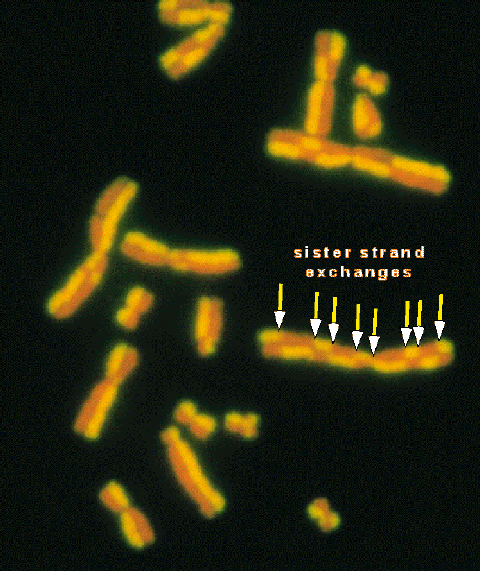
Sister chromatid exchanges (SCEs) involve breakage of both DNA strands, followed by an exchange of whole DNA duplexes. This occurs during the S phase and is efficiently induced by mutagens that form DNA adducts or that interfere with DNA replication. The formation of SCEs has been correlated with recombinational repair and the induction of point mutations, gene amplification and cytotoxicity.
The SCE test is usually performed on human peripheral blood lymphocytes. As peripheral lymphocytes are in the resting G0 stage of the cell cycle, they have to be stimulated to divide by an aspecific antigen, like phytohaemagglutinin. To collect a sufficient number of mitotic cells, a spindle inhibitor like colcemid may be added shortly before fixation (at 72 hours) , to block cells in (pro)metaphase of the second mitosis.

To allow for a differential staining that enables the researcher to distinguish both chromatids, BrdU (bromo-deoxy-uridine) is added to the culture medium for the duration of two complete cell cycles. Chromatids in which only one strand of DNA incorporated BrdU show a normal dark Giemsa staining, whereas those with two substituted strands, stain less darkly. If an exchange occurred, this can be seen as the dark part changes to the other arm: "harlequin chromosomes".
The technique can also be used to estimate the division rate, as first metaphases stain uniformly dark.

Characteristics of SCE test:
Advantages/ Disadvantages
|
Advantages |
Disadvantages |
|
|
Confounding factors:
major confounding factor: smoking